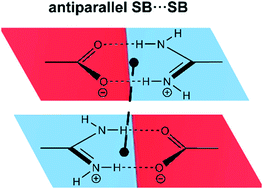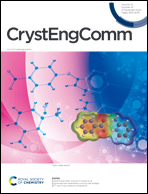Supramolecular assemblies involving salt bridges: DFT and X-ray evidence of bipolarity†
Abstract
A series of pyridinium-carboxylate salts (1–3) were designed, synthesized and structurally characterized to explore the importance of salt-bridge (SB) interactions in building self-assembled structures. We present a comprehensive analysis of the SB interaction in crystal structures of 4,4′-oxybis(benzoic acid) with substituted aminopyridines where the SBs display extremely well defined geometric preferences. In the solid-state, compound (1) exhibits lone-pair (l.p)⋯(SB)/(SB)⋯π+ assemblies while compound (2) shows a C–H⋯(SB)/(SB)⋯π network. Interestingly, compound (3) exhibits two distinct networks π+⋯(SB)/(SB)⋯(SB)/(SB)⋯π+ and C–H⋯(SB)/(SB)⋯H–C. These extended supramolecular networks are studied and described in detail. The duality of the SBs in stabilizing the π-facial interactions with electron rich and/or electron poor moieties is also described. The energetic and geometric features of salt-bridge interaction are studied and its impact on the resultant supramolecular organization is analyzed using theoretical DFT-D3 calculations. The theoretical study combines the energetic features of the noncovalent forces that participate in the extended network and the characterization of the diverse interactions by means of Bader's theory of ‘atoms in molecules’(AIM).



 Please wait while we load your content...
Please wait while we load your content...